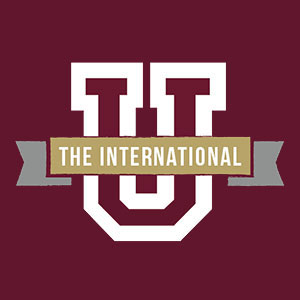A&M International Part of A&M System Commitment to Significantly Increase Production of Public School Teachers

Texas A&M International University will be part of a Texas A&M University System commitment to significantly increase the production of public school teachers--especially in high-need fields--over the next five years. This effort is part of the Regents' Initiative for Excellence in Education, an unprecedented action taken by the A&M System Board of Regents last spring to reinforce critical ties between public schools, community colleges and the A&M System.
The A&M System's nine university presidents have pledged to increase annual production rates of math, science, technology and foreign language teachers by more than 250 percent in each category, as well as the number of bilingual and special education teachers by over 170 percent.
Technology -- 5-Year Target: 42; 282 % Increase over Baseline
Math -- 5-Year Target: 328; 257 % Increase over Baseline
Science -- 5-Year Target: 514; 252 % Increase over Baseline
Foreign Language -- 5-Year Target: 88; 252 % Increase over Baseline
Special Education -- 5-Year Target: 443; 172 % Increase over Baseline
Bilingual/ESL -- 5-Year Target: 228; 171 % Increase over Baseline
Additionally, A&M System officials have set goals to increase total annual production of teachers by 33 percent.
Presently, the A&M System graduates 2,499 teachers. Under this plan, system universities will increase that number to 3,318 teachers.
"Presently, one in five teachers who graduates from Texas universities is produced by an A&M System university," said Dr. William E. Reaves, The Texas A&M University System's Assistant Vice Chancellor for Public Education. "Through the Regents' Initiative, A&M System institutions will increase their market share to one in four Texas teachers.
"The presidents of our universities have taken a significant leadership position by committing their institutions to the recruitment and development of Texas teachers," Dr. Reaves said, "The projected goals are in direct response to the state's need for additional educators and represent a substantial effort by A&M System institutions. These goals are truly substantive, and our success can be clearly measured. We're proud of that."
Dr. Charles Jennett, A&M International president, said the University prides itself on being responsive to the needs of the community it serves and is committed to increased teacher production.
"Clearly, we are faced with one of the most severe teaching shortages this State and area has ever experienced. A&M International graduates comprise the greatest percentage of local and area educators. We are proud to be part of the System's visionary innovation on this issue and the shared effort to address this shortage," Dr. Jennett said.
Dr. Rosa Maria Vida, dean of the A&M International College of Education, said the University will continue to strengthen its dynamic partnerships with local and area school districts to help increase teacher production.
"We've been monitoring this critical shortage and developing locally sensitive initiatives to speedily address needs. We have a number of ongoing initiatives including training for Master Reading Teachers at Laredo Independent School District and a Mentor Teacher Initiative scheduled April 25-27 with both local school districts," she explained.
Vida noted that the State Board of Educator Certification (SBEC) reported that in the 1997-98 school year, 22,000 teachers were initially certified in Texas. Of that number, approximately 12,200 teachers were certified by Texas universities.
She said another 10 percent were certified through alternative certification programs, while the remainder received certification in other ways (such as through programs in other states).
"Due to a number of factors--increased enrollment, the large number of teachers nearing retirement and the loss of a significant number of teachers after five years in the profession--universities are not producing enough teachers to meet the needs of the state's public schools," Dr. Vida explained.
"In concert with our fellow Texas A&M University System campuses, we're committed to doing our part to change this. We will be working not only on recruiting and developing quality teachers, but also through our partnerships with school districts, helping teachers develop long, productive careers in the classroom. We recognize and encourage a vested interest in quality teachers for every classroom here and throughout Texas," she added.
According to SBEC, Texas school districts anticipated having 63,300 teaching vacancies at the start of the 1998-99 school year.
Dr. Reaves said that in order to achieve these goals, the A&M System universities will work on seven fronts simultaneously, including:
- Creating regional partnership councils, comprised of leaders from community colleges, public schools and businesses, as well as other key stakeholders;
- Aggressively recruiting prospective teachers by collaborating with secondary schools and community colleges
- Developing teacher leaders who can serve as clinical faculty at the A&M System universities;
- Encouraging arts and science faculties to become more actively involved in the preparation of teacher candidates;
- Engaging more high school and middle school campuses as partners in student preparation;
- Assisting with the successful induction of new teachers into their careers as classroom teachers; and
- Expanding its work with public schools and community colleges on educational research and development;
Reaves said efforts like those at A&M International will be coordinated through the Institute for School-University Partnerships, recently established by The Texas A&M University System's Board of Regents. The institute, which is the first of its kind in Texas, is dedicated to achieving stronger educational programs by working more closely with Texas public schools.
The Regents' Initiative for Excellence in Education is funded over the next five years with $14 million in grants from the U.S. Department of Education, the Pew Charitable Trusts, the Sid W. Richardson Foundation of Fort Worth and the Meadows Foundation of Dallas.
The Texas A&M University System consists of nine universities, a health science center and eight state agencies that serve approximately 90,000 students and reach nearly 4 million people each year through combined service missions.
Journalists who need additional information or help with media requests and interviews should contact the Office of Public Affairs and Information Services at pais@tamiu.edu